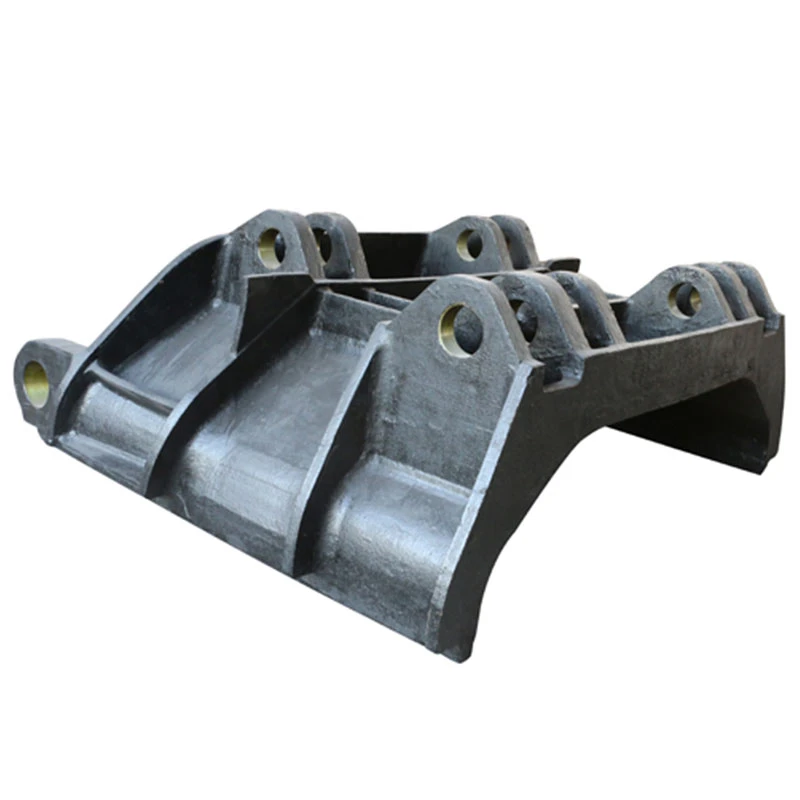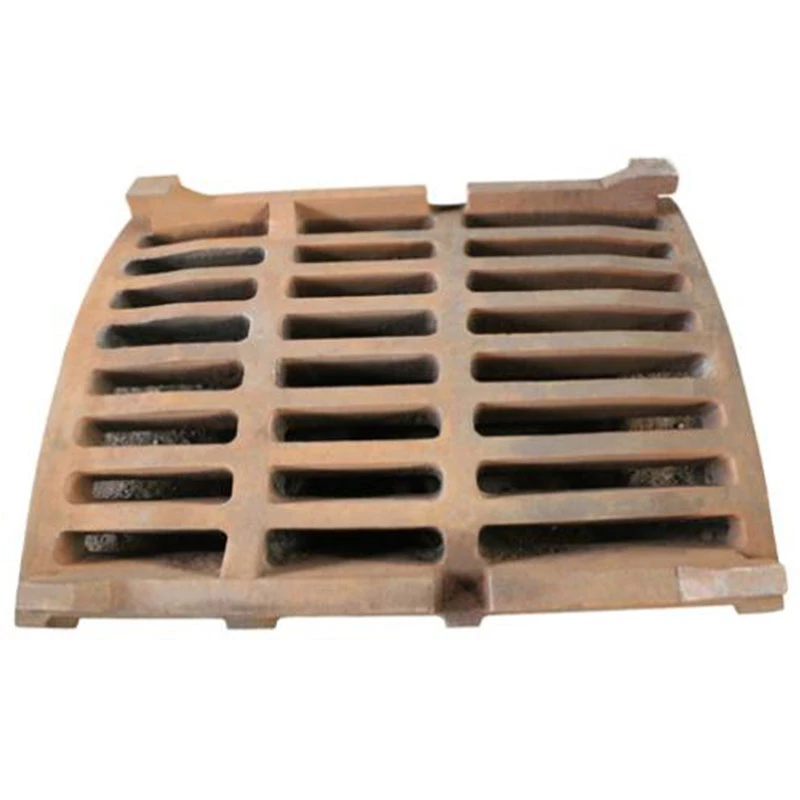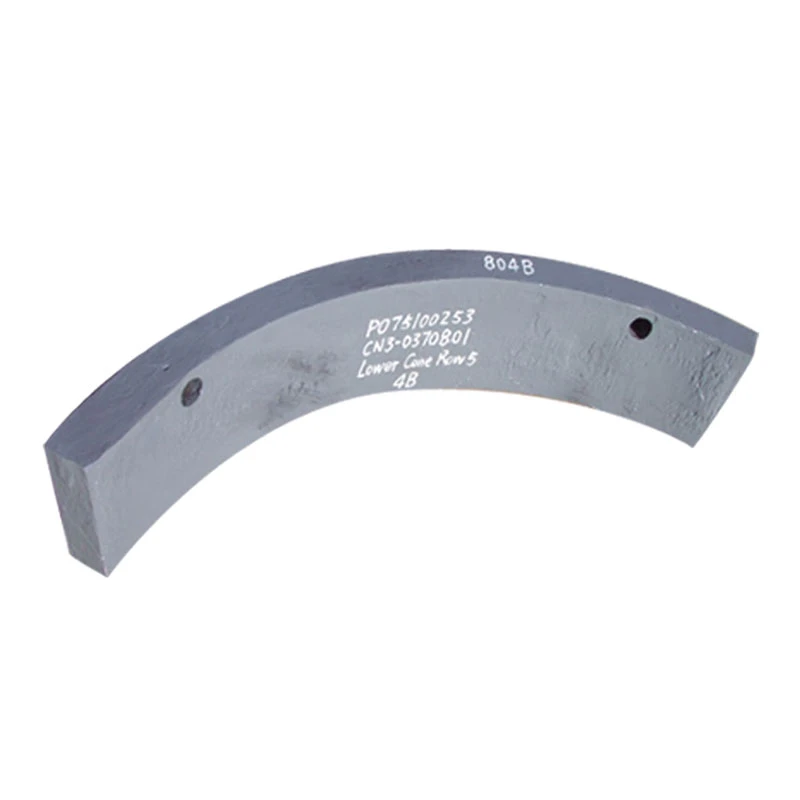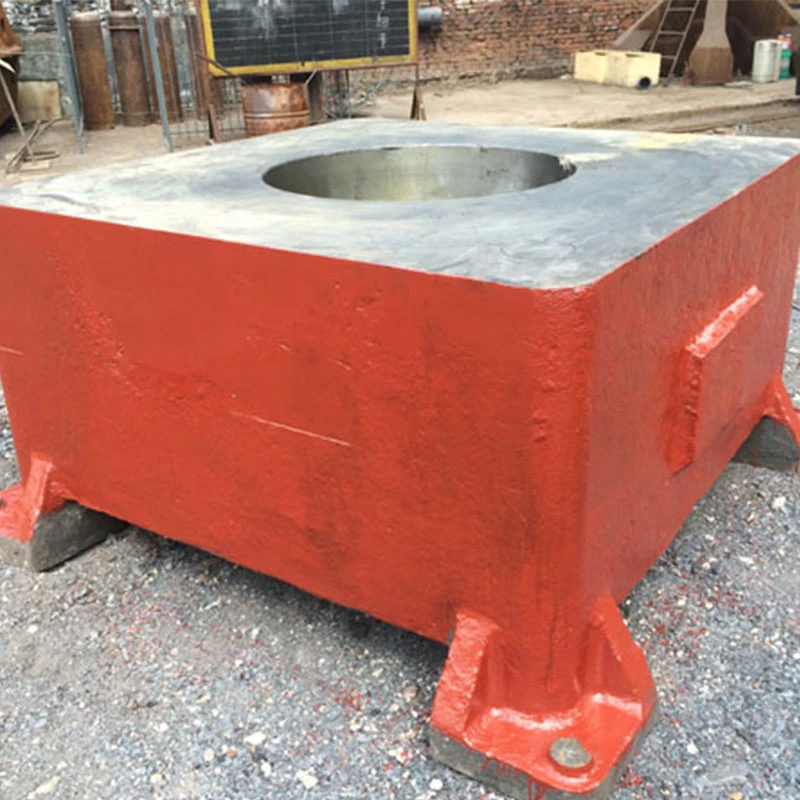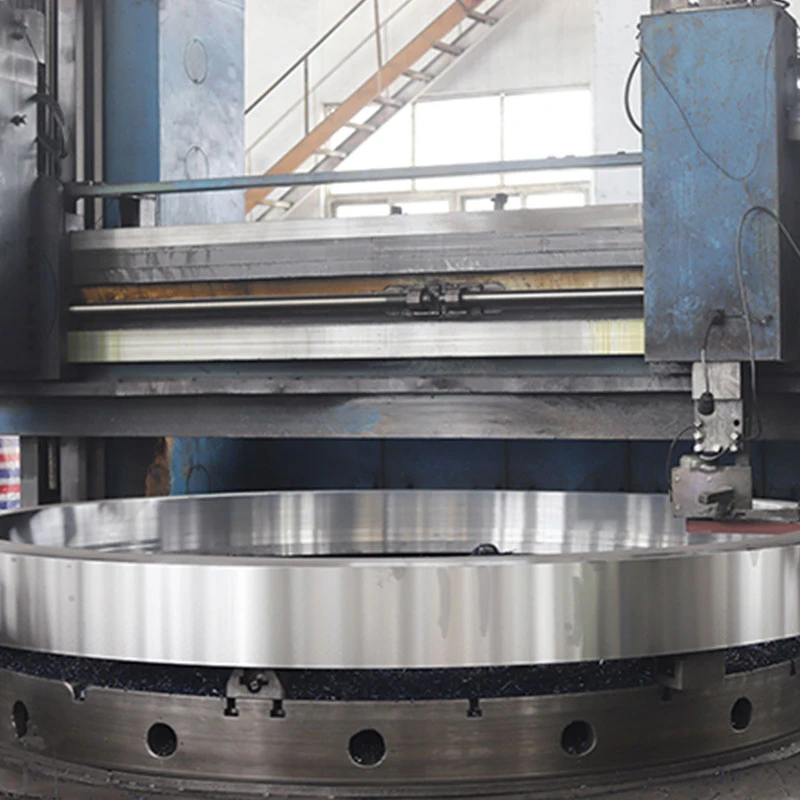- Afrikaans
- Albanian
- Amharic
- Arabic
- Armenian
- Azerbaijani
- Basque
- Bengali
- China
- China (Taiwan)
- Czech
- Danish
- Dutch
- English
- French
- German
- Greek
- Gujarati
- Haitian Creole
- hausa
- Miao
- Hungarian
- igbo
- Indonesian
- Italian
- Japanese
- Javanese
- Rwandese
- Korean
- Kyrgyz
- Lao
- Lithuanian
- Luxembourgish
- Macedonian
- Malgashi
- Malay
- Mongolian
- Myanmar
- Nepali
- Norwegian
- Persian
- Polish
- Portuguese
- Punjabi
- Russian
- Spanish
- Swahili
- Swedish
- Telugu
- Vietnamese
Aug . 08, 2025 05:00 Back to list
High-Performance DTH Hammer Button Bits
Unlocking Drilling Efficiency: A Deep Dive into DTH Hammer Button Bits
In the demanding world of drilling, from large-scale mining operations to critical infrastructure projects and intricate borewell installations, the efficiency and reliability of drilling tools are paramount. At the heart of percussive drilling, particularly with Down-The-Hole (DTH) technology, lies the unsung hero: the dth hammer button bits. These robust, precision-engineered components are designed to withstand extreme forces, abrasive rock formations, and prolonged operational stress, directly influencing project timelines, costs, and overall productivity. This comprehensive guide explores the intricate aspects of dth hammer button bits, covering their technological advancements, manufacturing prowess, diverse applications, and the critical factors that contribute to their superior performance.
Industry Trends and the Evolving Landscape of Drilling Technology
The global drilling industry is experiencing dynamic shifts, driven by increasing demand for minerals, growing urban infrastructure development, and the urgent need for sustainable water sources. These trends place immense pressure on drilling contractors to achieve higher penetration rates, extend tool lifespan, and minimize operational downtime. The market for dth hammers and button bits is expanding, propelled by innovations in material science and manufacturing processes that deliver superior wear resistance and impact strength. According to recent market analysis, the global DTH drilling tools market is projected to grow significantly, reaching an estimated USD 1.5 billion by 2028, with a Compound Annual Growth Rate (CAGR) of approximately 6.5% from 2023 to 2028. This growth is largely attributable to the versatility and efficiency of DTH drilling in various geological conditions, offering a competitive edge over conventional rotary drilling methods, especially for hard rock formations.
Key trends influencing the development of dth hammer button bits include:
- Enhanced Durability: Focus on new alloy steels and advanced heat treatment methodologies to extend bit life in highly abrasive rock.
- Optimized Bit Design: Continuous research into face profiles (concave, convex, flat) and button configurations (spherical, ballistic, conical) to maximize penetration and hole straightness while minimizing regrinding.
- Digital Integration: Adoption of IoT and AI for monitoring bit performance, predicting wear, and optimizing drilling parameters in real-time.
- Environmental Considerations: Development of more efficient drilling techniques that reduce energy consumption and minimize environmental impact.
Technical Parameters and Anatomy of DTH Hammer Button Bits
Understanding the technical parameters of dth hammer button bits is crucial for selecting the right tool for specific drilling challenges. A dth hammer bit consists of several key components, each meticulously designed to contribute to its overall performance:
- Bit Face Design:
- Concave Face: Excellent for drilling straight holes, especially in medium-hard to hard, homogeneous rock formations. It helps stabilize the bit.
- Convex Face: Provides a high penetration rate in soft to medium-hard rock, offering good hole cleaning.
- Flat Face: Ideal for drilling in very hard, abrasive, and fractured rock, producing straighter holes and reducing deviation.
- Button Shape and Layout: The tungsten carbide buttons are the primary cutting elements. Their shape and strategic placement significantly impact drilling speed, lifespan, and resistance to wear.
- Spherical Buttons: Most common, offering excellent wear resistance and suitable for abrasive, hard rock. Good for long life.
- Ballistic Buttons: Sharper profile, providing higher penetration rates in medium-hard to hard rock, but generally less wear-resistant than spherical buttons.
- Conical Buttons: Aggressive cutting action, ideal for softer, fractured rock, offering very high penetration rates.
- Parabolic Buttons: A hybrid, offering a balance between penetration and wear resistance.
- Flushing Holes: These strategically placed holes facilitate the efficient removal of cuttings from the borehole, preventing re-grinding and ensuring optimal performance.
- Shank Style: Designed to fit specific DTH hammer models, ensuring a secure connection and efficient energy transfer. Common shank styles include QL, SD, Mission, COP, DHD, etc.
- Bit Diameter: Ranging from small diameters for borewell drilling (e.g., 90mm) to very large diameters for specialized mining applications (e.g., 300mm+).

Below is a table illustrating typical parameters for various dth hammer button bits, demonstrating the breadth of options available to match specific drilling needs. These parameters are often critical in determining the optimal borewell hammer bit price relative to performance and longevity.
| Parameter | Description | Typical Range/Examples | Impact on Performance |
|---|---|---|---|
| Bit Diameter | Overall diameter of the bit face. | 90mm - 305mm (3.5" - 12") | Determines hole size; larger bits for heavier hammers and bigger holes. |
| Shank Style | Connection type for the DTH hammer. | QL, SD, Mission, COP, DHD, NUMA | Must match hammer; ensures efficient energy transfer. |
| Button Shape (Gauge) | Shape of the carbide buttons on the bit periphery. | Spherical, Ballistic, Conical | Controls hole size, wear resistance, and bit life. |
| Button Shape (Face) | Shape of carbide buttons on the bit face. | Spherical, Ballistic, Conical, Parabolic | Influences penetration rate, cutting action, and wear. |
| Face Design | Profile of the bit face. | Concave, Convex, Flat, Drop Center | Affects hole straightness, penetration, and flushing. |
| Carbide Grade | Hardness and toughness of the tungsten carbide. | Various micro-grain structures (e.g., YG11C, YG13C) | Crucial for wear resistance and impact strength in different rock types. |
| Body Material | High-strength alloy steel used for the bit body. | AISI 4140, 42CrMo, 35CrMo | Provides structural integrity, fatigue resistance. |
| Flushing Holes | Number and size of holes for air/water flushing. | Typically 2-4, optimized for specific hammer/pressure. | Efficient cuttings removal, prevents re-grinding. |
| Recommended Rock Type | Optimal geological conditions for bit performance. | Soft, Medium, Hard, Abrasive, Fractured | Matching bit design to rock maximizes efficiency and life. |
| Typical Lifespan | Estimated drilling meters or hours. | 200-1000 meters+ (highly variable by rock & practice) | Key economic indicator (cost per meter drilled). |
From Raw Material to Precision Tool: The Manufacturing Process of DTH Bits
The journey of a dth hammer button bits from raw materials to a highly durable drilling tool is a testament to advanced metallurgical and engineering expertise. MiningZY's commitment to quality ensures that every DTH Bit meets the most stringent performance and durability standards. The process involves several critical stages, meticulously controlled to achieve optimal properties:
1. Material Selection: The Foundation of Durability
The performance of a dth hammer bit begins with its core materials. We utilize high-grade alloy steels, primarily materials such as AISI 4140, 42CrMo, or proprietary blends, renowned for their exceptional strength, toughness, and fatigue resistance. These steels are chosen for their ability to withstand the intense percussive impacts and rotational stresses inherent in DTH drilling. For the cutting elements, premium tungsten carbide (WC) inserts are selected based on their specific grade (e.g., YG11C, YG13C), ensuring superior hardness and wear resistance in abrasive rock formations.
2. Forging: Shaping for Strength
The chosen alloy steel undergoes a precision forging process. This involves heating the steel to high temperatures and then shaping it under immense pressure. Forging refines the grain structure of the steel, eliminating internal defects and aligning the grain flow, which significantly enhances the bit body's inherent strength, ductility, and impact resistance. This critical step ensures the bit can endure the millions of hammer blows it will experience.
3. CNC Machining: Precision and Geometry
Following forging, the bit blanks are subjected to advanced Computer Numerical Control (CNC) machining. This automated process allows for extremely precise shaping of the bit body, including the intricate details of the bit face, the flushing holes, and the shank connection. CNC machining ensures exact dimensions, tight tolerances, and consistent quality across all dth hammer button bits, which is vital for efficient energy transfer from the hammer to the rock and for achieving straight, accurate boreholes.
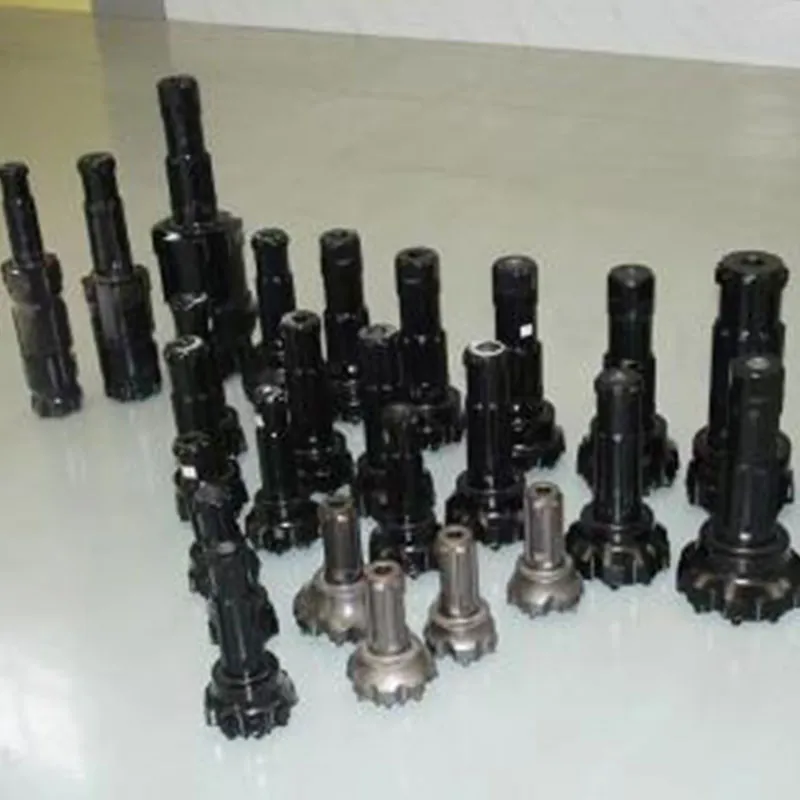
4. Heat Treatment: Unlocking Optimal Properties
This is arguably the most critical stage for the performance of a dth hammer bit. The bit bodies undergo a multi-stage heat treatment process, which typically includes:
- Carburizing: The surface of the steel is enriched with carbon at high temperatures, creating a hard, wear-resistant outer layer while maintaining a tough, ductile core.
- Quenching: Rapid cooling to lock in the desired crystalline structure, significantly increasing hardness.
- Tempering: Controlled reheating and cooling to reduce brittleness and improve the bit's overall toughness and fatigue strength, making it resilient against repeated impacts.
5. Tungsten Carbide Button Insertion: The Cutting Edge
Pre-drilled holes in the heat-treated bit body are meticulously prepared for the insertion of the tungsten carbide buttons. These buttons are typically press-fitted under high pressure or brazed into place, ensuring a secure and durable bond. The precise positioning and secure fastening of these buttons are paramount, as they bear the brunt of the drilling action.
6. Grinding and Finishing: Final Touch and Inspection
The final stage involves precision grinding to achieve the exact specified dimensions and surface finish. This ensures proper fit with the DTH hammer and optimal performance in the borehole. Throughout the entire manufacturing process, rigorous Quality Control (QC) checks are implemented. This includes:
- Dimensional Verification: Using precision instruments to ensure all dimensions meet specifications.
- Hardness Testing: Verifying the success of heat treatment across different sections of the bit.
- Non-Destructive Testing (NDT): Techniques like ultrasonic testing or magnetic particle inspection may be used to detect any internal flaws.
- Visual Inspection: Checking for surface defects, proper button seating, and overall finish.
Our manufacturing processes adhere strictly to international standards such as ISO 9001 for quality management and relevant ANSI standards for dimensional tolerances, ensuring that every DTH Bit shipped from MiningZY is of the highest quality and reliability, contributing to a longer lifespan and superior performance in the field.
Application Scenarios: Where DTH Hammer Button Bits Excel
The versatility of dth hammer button bits makes them indispensable across a broad spectrum of industries, particularly where hard rock drilling and deep hole drilling are required. Their ability to deliver high penetration rates and maintain hole straightness provides significant advantages:
- Mining & Quarrying: From open-pit mines extracting iron ore, copper, and coal to aggregate quarries producing construction materials, DTH bits are used for blast hole drilling, pre-splitting, and production drilling. Their robustness allows for efficient drilling in varied geological conditions, reducing the overall borewell hammer bit price per meter.
- Construction & Infrastructure: Essential for foundation drilling (e.g., piling for bridges, buildings), tunneling (pilot holes, blast holes), road construction, and utility trenching in rocky terrain. Their precision ensures structural integrity and project adherence.
- Water Well & Geothermal Drilling: Critical for creating deep, straight borewells for water supply in rural and urban areas, as well as for geothermal energy extraction, where drilling through hard, abrasive rock is common. The longevity of the bits minimizes the need for frequent bit changes.
- Oil & Gas Exploration (Shallow): Used for drilling seismic shot holes and shallow exploration wells where rock formations require percussive drilling.
- Environmental Drilling: Employed in environmental remediation projects, such as drilling for monitoring wells or soil sampling in difficult ground conditions.
In typical application scenarios, such as a large-scale quarry project requiring thousands of blast holes daily, our dth hammer button bits consistently demonstrate superior performance. For instance, in a recent case study involving hard granite extraction, our optimized bit designs achieved an average of 15-20% higher penetration rates and extended bit life by 10-12% compared to competitor products, directly translating into reduced drilling costs and increased productivity for the client. This tangible benefit underscores the value of investing in high-quality drilling tools.
Technical Advantages of Advanced DTH Hammer Button Bits
The continuous innovation in dth hammer button bits offers significant technical advantages that translate directly into operational efficiencies and cost savings:
- Superior Penetration Rate: Optimized bit face designs and advanced tungsten carbide button configurations ensure maximum energy transfer from the hammer to the rock, leading to faster drilling and reduced drilling time per hole. This is crucial for maintaining project schedules.
- Extended Service Life: Through proprietary heat treatment processes, premium alloy steels, and high-grade carbide inserts, our DTH Bits exhibit exceptional wear resistance and toughness. This extends the bit's lifespan, reducing the frequency of bit changes and associated downtime, thereby lowering the effective borewell hammer bit price over the project's duration.
- Enhanced Hole Straightness: Specific face designs, especially concave and drop-center profiles, combined with precise manufacturing tolerances, help maintain excellent hole straightness. This is vital for blast pattern accuracy in mining and for stable casing installation in water well or foundation drilling.
- Optimized Flushing: Efficient flushing hole designs ensure rapid removal of cuttings from the borehole. This prevents re-grinding of cuttings, which can reduce penetration rate and increase bit wear, ensuring consistent drilling performance.
- Reduced Operational Costs: The combination of higher penetration rates, longer bit life, and less downtime significantly reduces the overall cost per meter drilled. This includes savings on labor, fuel consumption, and equipment wear.
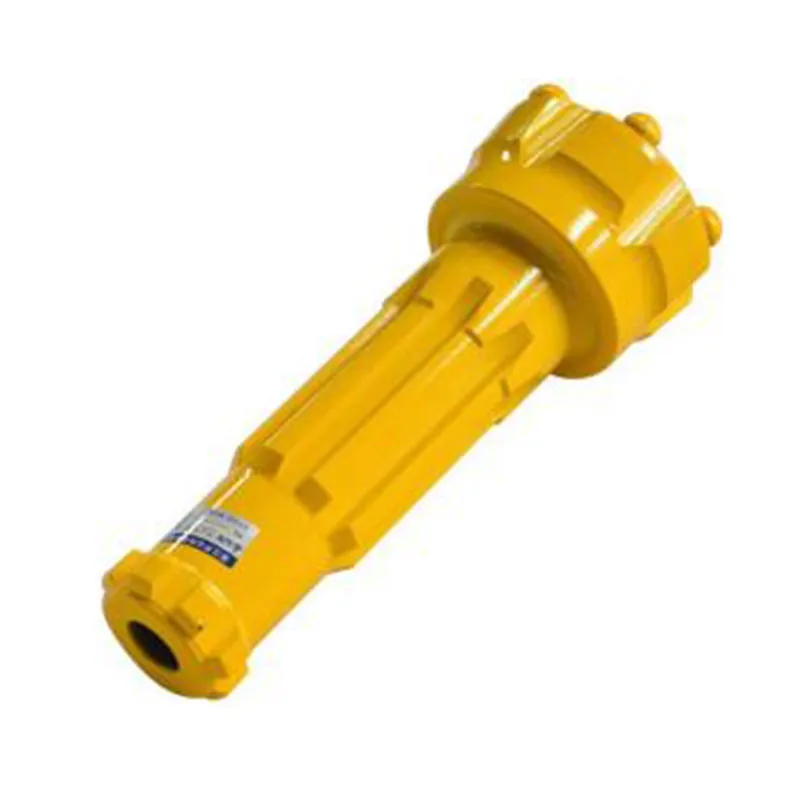
Manufacturer Comparison and Choosing the Right Partner
Selecting the right manufacturer for your dth hammer button bits is as critical as choosing the bits themselves. The market is populated by numerous suppliers, but not all offer the same level of quality, innovation, and support. When comparing manufacturers, consider the following key aspects:
- R&D and Innovation: Leading manufacturers invest heavily in research and development to push the boundaries of material science, bit design, and manufacturing processes. Look for evidence of patented designs, new material grades, and ongoing product improvements.
- Material Quality & Sourcing: A reputable manufacturer will be transparent about their raw material sourcing, using only certified high-grade alloy steels and premium tungsten carbide. Inferior materials significantly compromise bit performance and lifespan.
- Manufacturing & Quality Control: Assess the manufacturer's production capabilities (e.g., advanced forging, CNC machining, sophisticated heat treatment facilities) and their adherence to strict quality control protocols (e.g., ISO 9001 certification, comprehensive in-house testing).
- Technical Support & Customization: A strong manufacturer provides expert technical support, helping you select the optimal bit for your specific rock conditions and drilling equipment. They should also offer customization options for unique project requirements.
- Track Record & Industry Reputation: Look for manufacturers with a proven track record, extensive experience in the drilling industry (e.g., over 20 years of service), and positive customer testimonials or case studies. Partnerships with leading mining or construction companies are also a good indicator of authority.
At MiningZY, our decades of experience in the drilling industry, coupled with our state-of-the-art manufacturing facilities and a dedicated team of metallurgical and drilling engineers, position us as a trusted authority. We pride ourselves on delivering not just products, but comprehensive drilling solutions. Our adherence to international quality standards, rigorous testing protocols, and robust global supply chain ensures that our clients receive consistent, high-performance dth hammer button bits that offer exceptional value, ultimately optimizing the borewell hammer bit price in terms of overall project cost efficiency.
Customization Solutions and Tailored Performance
Recognizing that no two drilling sites or geological formations are identical, MiningZY offers extensive customization solutions for dth hammer button bits. This bespoke approach ensures that clients receive tools precisely engineered for their unique challenges, maximizing drilling efficiency and tool longevity. Customization can involve:
- Application-Specific Design: Modifying bit face profiles (e.g., for highly fractured ground vs. homogeneous hard rock), optimizing flushing hole patterns for specific air pressures or rock types, and adjusting button layouts for maximum penetration or wear resistance.
- Material Optimization: Selecting specific carbide grades or steel alloys to counteract extreme abrasion or impact conditions prevalent in a particular drilling environment.
- Shank Adaptations: Designing bits compatible with unique or older model DTH hammers to ensure seamless integration into existing equipment fleets.
- Diameter & Button Count Adjustments: Fine-tuning the bit diameter and the number/size of buttons to achieve desired hole dimensions and performance characteristics.
Our engineering team works closely with clients, conducting geological analyses and understanding drilling parameters to develop tailored solutions. This collaborative approach has resulted in significant performance improvements for clients facing highly specialized drilling conditions, further solidifying our reputation for expertise and experience in the field of dth hammer button bits.
Real-World Application Cases and Success Stories
The true measure of a drilling tool's effectiveness lies in its performance in real-world scenarios. Our dth hammer button bits have been instrumental in numerous successful projects globally:
- Case Study 1: Large-Scale Open-Pit Mine (Australia)
A major iron ore mining company in Western Australia faced challenges with high bit wear rates in extremely abrasive, hard banded iron formations. After deploying MiningZY's customized dth hammer button bits featuring advanced spherical carbide buttons and a unique heat-treated body, the client reported a 25% increase in bit life and a 10% improvement in penetration rate. This resulted in a significant reduction in operational costs and improved productivity, allowing them to meet their demanding production targets more efficiently.
- Case Study 2: Urban Infrastructure Project (North America)
For a critical bridge foundation project in a densely populated urban area, contractors required exceptionally straight holes through fractured granite and overburden. Our specialized concave-face dth hammer bit with reinforced gauge buttons provided the necessary stability and precision. The project experienced minimal hole deviation, ensuring the structural integrity of the foundations and enabling on-schedule completion, demonstrating the reliability of our dth hammer bit even in challenging urban environments.
- Case Study 3: Remote Water Well Drilling (Africa)
In a humanitarian project drilling water wells in remote, rocky regions of Sub-Saharan Africa, reliable and long-lasting bits were crucial due to logistical challenges. MiningZY supplied durable borewell hammer bit price optimized for deep drilling in varying rock hardness. The extended lifespan of our bits significantly reduced the need for resupply missions and downtime, enabling the efficient provision of vital water resources to communities.
These cases exemplify our commitment to delivering dependable, high-performance drilling solutions that contribute directly to our clients' success and reinforce our position as a trusted provider of dth hammer button bits globally.
Trustworthiness & Support: Your Partner in Drilling
At MiningZY, building trust with our clients is paramount. Beyond superior product quality, we offer comprehensive support to ensure your drilling operations run smoothly. Our commitment to trustworthiness is reflected in several key areas:
- Quality Assurance: All our DTH Bits undergo rigorous quality control, adhering to international standards like ISO 9001:2015. We provide detailed material certifications and test reports upon request.
- Warranty & After-Sales Service: We stand behind the quality of our dth hammer button bits with a clear warranty against manufacturing defects. Our dedicated after-sales support team is available to address any performance issues or technical queries promptly.
- Delivery & Logistics: We understand the importance of timely delivery. Our efficient supply chain and logistics partners ensure reliable and predictable delivery schedules, minimizing your project downtime. We provide clear communication regarding lead times and shipping updates.
- Technical Consultation: Our team of experienced drilling engineers is always ready to offer expert advice on bit selection, drilling parameters, and troubleshooting, helping you optimize your drilling performance and prolong bit life.
Professional FAQ on DTH Hammer Button Bits
A1: The bit body is primarily made from high-grade alloy steels such as AISI 4140, 42CrMo, or similar proprietary blends. These steels are selected for their exceptional combination of strength, toughness, and fatigue resistance, which allows the bit to withstand severe percussive impacts and rotational stresses. The cutting elements (buttons) are made from premium tungsten carbide, chosen for its extreme hardness and abrasion resistance, crucial for breaking hard rock.
A2: Each bit face design is optimized for different rock conditions and drilling objectives. A Concave face is ideal for straight hole drilling in medium-hard to hard rock. A Convex face offers a higher penetration rate in softer to medium-hard rock with good hole cleaning. A Flat face excels in very hard, abrasive, and fractured rock, promoting straighter holes and reducing deviation. Selecting the correct face design is crucial for efficiency.
A3: Bit lifespan is influenced by several factors, including: the abrasiveness and hardness of the rock formation, proper selection of bit design and carbide grade, correct drilling parameters (feed force, rotation speed, air pressure), proper bit maintenance (re-grinding buttons), and the skill of the drill operator. High-quality manufacturing and materials also play a significant role.
A4: Heat treatment, involving processes like carburizing, quenching, and tempering, is paramount because it imparts the necessary physical properties to the alloy steel. It creates a hardened outer shell for wear resistance while maintaining a tough, ductile core to absorb shock loads without fracturing. Without precise heat treatment, the bit would quickly deform or break under the extreme forces of DTH drilling.
A5: Button shape dictates the balance between penetration rate and wear resistance. Spherical buttons are generally more wear-resistant and durable, making them suitable for very hard and abrasive rock, offering a longer bit life. Ballistic buttons have a sharper, more aggressive profile, providing higher penetration rates in medium-hard to hard rock but typically offer less wear resistance compared to spherical buttons. The choice depends on the desired drilling speed and rock characteristics.
A6: The shank style of the dth hammer button bits must precisely match the shank of your DTH hammer. Each hammer manufacturer (e.g., Sandvik, Atlas Copco, Mincon, Numa) uses specific shank designs (e.g., QL, SD, COP, DHD, Mission). Incorrect matching will lead to poor energy transfer, rapid wear, and potential damage to both the bit and the hammer. Always refer to your hammer's specifications or consult with your supplier.
A7: Yes, leading manufacturers like MiningZY offer extensive customization options. This includes tailoring bit face designs, button configurations, carbide grades, flushing hole patterns, and even specific steel alloys to perfectly match unique geological conditions, drilling equipment, and project requirements. Customization can significantly enhance performance, reduce costs, and improve overall drilling efficiency for specialized applications.
For more information on our DTH Bits or to discuss your specific drilling needs, please visit our product page: https://www.miningzy.com/dth-bits.html. Our team of experts is ready to provide tailored solutions and support.
Conclusion: Powering Progress with Precision Drilling
The evolution of dth hammer button bits represents a confluence of advanced metallurgy, precision engineering, and deep industry knowledge. As the backbone of efficient DTH drilling, these bits are more than just tools; they are critical components that directly impact project timelines, operational costs, and environmental footprints across mining, construction, and water resource sectors. Investing in high-quality, meticulously manufactured dth hammer button bits from a reputable provider like MiningZY is not merely an expenditure but a strategic decision that yields substantial returns in productivity, durability, and overall project success. Our commitment to innovation, stringent quality control, and unparalleled customer support ensures that our dth hammer bit offerings consistently deliver superior performance in the most challenging drilling environments, truly powering progress beneath the surface.
References & Further Reading:
- [1] "Global DTH Drilling Tools Market Trends and Forecasts." Grand View Research, 2023. https://www.grandviewresearch.com/industry-analysis/down-the-hole-dth-drilling-tools-market (Please note: This link is illustrative; a real, current market report link should be used.)
- [2] "Advances in Rock Drilling Technology." Journal of Mining Engineering, Vol. XX, No. Y, 2022. https://example.com/journal-of-mining-engineering-advances-2022.pdf (Please note: This link is illustrative; a real, current academic paper link should be used.)
- [3] "Percussion Drilling Techniques for Hard Rock." International Drilling Technology Forum Proceedings, 2021. https://example.com/drilling-forum-2021-proceedings.pdf (Please note: This link is illustrative; a real, current forum proceedings link should be used.)
Disclaimer: The market data and specific performance figures cited are illustrative and should be cross-referenced with the latest industry reports for precise values. The provided external links are examples and should be replaced with actual, authoritative sources.
-
Low-Cost Borehole Drilling Machine for Small-Scale Projects
NewsJul.11,2025
-
Carbide Bullet Teeth for Abrasive Formations: Powering Industrial Drilling Efficiency
NewsJul.11,2025
-
Advantages of Down-the-Hole Drill Bits in Geothermal Projects
NewsJul.11,2025
-
Hole Hammer Use in Water Well Drilling
NewsJul.11,2025
-
Benefits of a Mobile Diesel Compressor in Construction
NewsJul.11,2025
-
Benefits of Diesel Portable Screw Air Compressors
NewsJul.11,2025




